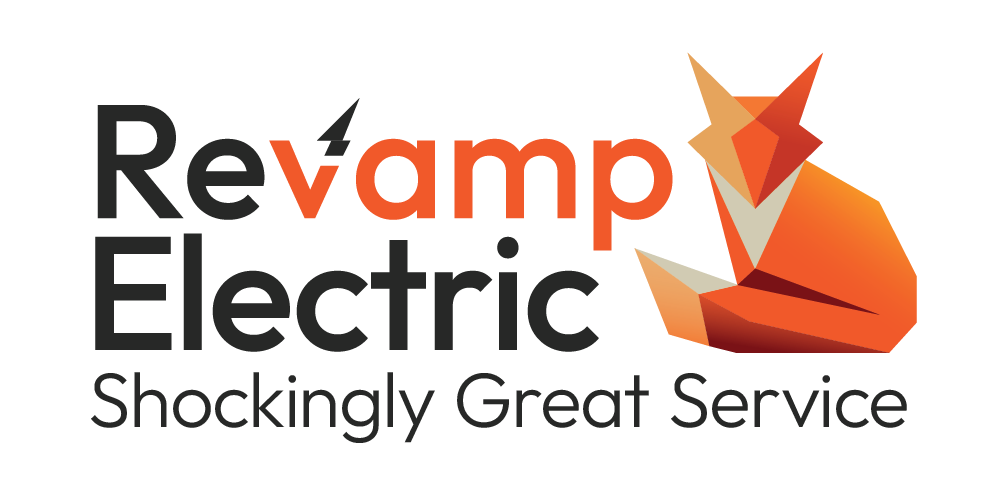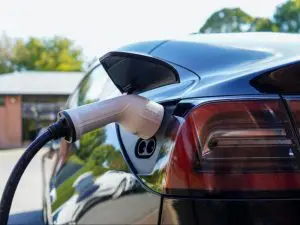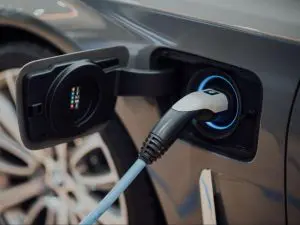Electric vehicles (EVs) are not just a glimpse into the future of transportation; they are rapidly becoming a reality of our present. With increasing environmental concerns and advancements in technology, many people are making the switch from traditional gas-powered vehicles to EVs. However, owning an EV also means you need a reliable and convenient way to charge it. This is where EV charger installation comes into play.
In this comprehensive guide, we will take you through everything you need to know about planning and executing an EV charger installation. Whether you are a homeowner looking to set up a charging station in your garage or a business owner interested in offering charging services, we’ve got you covered.
Why Choose Electric?
Environmental Benefits
The environmental benefits of electric vehicles are a significant driving force behind the transition from gas-powered cars. EVs produce zero tailpipe emissions, reducing air pollution and contributing to better air quality. This reduction in emissions is particularly crucial in urban areas where poor air quality can lead to various health issues.
EVs are also more energy-efficient than traditional internal combustion engine (ICE) vehicles. They convert a higher percentage of the electrical energy from the grid into vehicle movement, resulting in lower energy consumption and reduced greenhouse gas emissions.
Economic Advantages
While the upfront cost of some EVs may be higher than their gasoline counterparts, there are several economic advantages to consider:
- Lower Operating Costs: Electricity is generally cheaper than gasoline. EV owners can save a significant amount on fuel costs.
- Reduced Maintenance: EVs have fewer moving parts than ICE vehicles, leading to reduced maintenance and repair expenses over the vehicle’s lifetime.
- Tax Credits and Incentives: Many governments offer tax credits, rebates, and incentives to encourage EV adoption, further reducing the total cost of ownership.
Technological Advancements
Advancements in EV technology have resulted in longer driving ranges, faster charging times, and improved battery durability. Modern EVs are equipped with advanced features like regenerative braking, autopilot capabilities, and enhanced safety systems. As technology continues to evolve, the appeal of electric vehicles grows stronger.
Types of Electric Vehicles
Battery Electric Vehicles (BEVs)
Battery electric vehicles, often referred to as pure electric vehicles, run entirely on electricity stored in their batteries. They do not have an internal combustion engine, meaning they produce zero tailpipe emissions. BEVs are charged by plugging them into an electric power source, such as a charging station or a standard electrical outlet. Notable examples of BEVs include the Tesla Model 3, Nissan Leaf, and Chevrolet Bolt.
Plug-in Hybrid Electric Vehicles (PHEVs)
Plug-in hybrid electric vehicles combine an internal combustion engine with an electric motor and a rechargeable battery. PHEVs can operate in electric-only mode for a certain distance before switching to gasoline power. This dual power source provides greater flexibility and eliminates range anxiety, making PHEVs an attractive option for those not ready to go fully electric. Popular PHEVs include the Toyota Prius Prime and the Ford Escape Plug-in Hybrid.
Understanding EV Charging Levels
EV charging is categorized into different levels based on the charging speed and voltage. Understanding these levels is essential when planning your EV charger installation.
Level 1 Charging
Level 1 charging, also known as trickle charging, uses a standard 120-volt household electrical outlet. It is the slowest charging option and is often used with a portable charging cable that comes with most EVs. Level 1 charging is suitable for overnight charging at home and provides around 2-5 miles of range per hour of charging.
Level 2 Charging
Level 2 charging operates at 240 volts, providing faster charging speeds than Level 1. It is the most common charging level for residential and public charging stations. Level 2 chargers can deliver between 10-60 miles of range per hour, depending on the charger’s power output and the vehicle’s capabilities.
Level 3 Charging (DC Fast Charging)
Level 3 charging, also known as DC fast charging, is the fastest option and is primarily used at public charging stations. It operates at much higher voltage and amperage levels, allowing for rapid charging. DC fast chargers can provide around 60-100 miles of range in as little as 20-30 minutes, making them ideal for long trips and quick top-ups.
Home EV Charger Installation
Installing an EV charger at home is a convenient and cost-effective way to ensure your vehicle is always charged and ready to go. Here are the key considerations for home EV charger installation:
Selecting the Right Location
Choosing the right location for your home charger is crucial. It should be easily accessible, close to your parking spot, and within reach of an electrical panel. Consider factors like cable length and the ease of connecting your vehicle.
Choosing the Right Charger
There are various home EV charger brands and models available. Consider factors such as charging speed, connectivity options, and smart features. Some chargers offer Wi-Fi connectivity and mobile apps for monitoring and scheduling charging sessions.
Electrical Requirements
Home EV chargers typically require a dedicated 240-volt circuit, similar to what you’d use for an electric dryer or oven. It’s essential to have a licensed electrician assess your electrical panel’s capacity and make any necessary upgrades to accommodate the charger.
DIY vs. Professional Installation
While some homeowners may have the skills and knowledge to install a home EV charger themselves, many opt for professional installation. Professional electricians ensure that the installation complies with local codes and safety standards, giving you peace of mind.
Permitting and Regulations
Check with your local authorities and utility company for any permitting requirements and regulations associated with home EV charger installation. Compliance with these regulations is essential to ensure safety and legality.
Business EV Charger Installation
Businesses can benefit from offering EV charging stations to employees, customers, and the public. Here’s what you need to know about business EV charger installation:
Benefits of Offering Charging Stations
- Attract eco-conscious customers.
- Enhance employee satisfaction and retention.
- Generate additional revenue through charging fees.
- Showcase your commitment to sustainability.
Choosing the Right Charger for Your Business
Consider the location, power requirements, and expected usage of your charging stations when selecting the right charger model. It’s also important to decide whether you’ll offer Level 2 chargers for longer parking durations or DC fast chargers for quick turnarounds.
Installation Costs and Considerations
The cost of business EV charger installation can vary significantly based on factors such as the number of stations, electrical upgrades needed, and permitting fees. Evaluate the return on investment and long-term benefits when planning your installation.
Public vs. Private Charging Stations
Decide whether your charging stations will be publicly accessible or limited to employees or customers. Public stations may require additional considerations, such as payment processing and maintenance.
Marketing and Promoting Your Charging Services
Promote your charging stations through signage, website listings, and EV charging apps. Inform employees and customers about the availability of charging services to maximize usage.
Maintenance and Troubleshooting
Once your EV charger is installed and operational, regular maintenance is essential to ensure its continued performance. Here are some maintenance tips and common troubleshooting issues.
Cleaning and Upkeep
- Keep the charger and charging cable clean and free of debris.
- Check for any loose connections or visible damage.
- Inspect the charging cable for wear and tear.
Common Issues and Solutions
- Charger not working: Check for power supply issues or tripped breakers.
- Slow charging: Ensure the charger is correctly set to the desired charging level.
- Error codes on the charger: Refer to the charger’s manual or contact customer support for guidance.
- Overheating: Ensure the charger has adequate ventilation and is not exposed to direct sunlight.
Professional Maintenance Services
Consider scheduling periodic professional maintenance to ensure the charger’s components are functioning correctly. Professional maintenance can identify and address issues that may not be visible during routine checks.
The Future of EV Charging
As electric vehicles become increasingly popular, the EV charging landscape is evolving rapidly. Here’s what you can expect in the future of EV charging.
Advancements in Charging Technology
- Faster charging speeds: Continued advancements in battery and charging technology will lead to even faster charging times.
- Wireless charging: Wireless or inductive charging systems will eliminate the need for physical connectors and cables.
- Bidirectional charging: Some EVs will have the ability to return excess energy to the grid, providing grid support during peak demand.
The Growth of Charging Infrastructure
- Increased accessibility: Charging stations will become more prevalent in urban and rural areas, reducing range anxiety for EV owners.
- Expansion of fast charging networks: High-speed DC fast chargers will be more widely available along highways for long-distance travel.
- Charging at home and work: Home and workplace charging will continue to play a crucial role in the convenience of EV ownership.
Government Incentives and Policies
- More incentives: Governments will offer additional incentives to encourage EV adoption, including rebates, tax credits, and free charging.
- Stricter emissions regulations: Countries worldwide will implement stricter emissions standards, further driving the transition to electric vehicles.
- Support for charging infrastructure: Governments will invest in the expansion and maintenance of EV charging networks.
Conclusion
Transitioning from gas-powered vehicles to electric ones is not just a change in how we drive; it’s a shift toward a more sustainable and environmentally friendly future. EV charger installation is a crucial aspect of this transition, ensuring that electric vehicle owners have access to reliable and convenient charging solutions.



